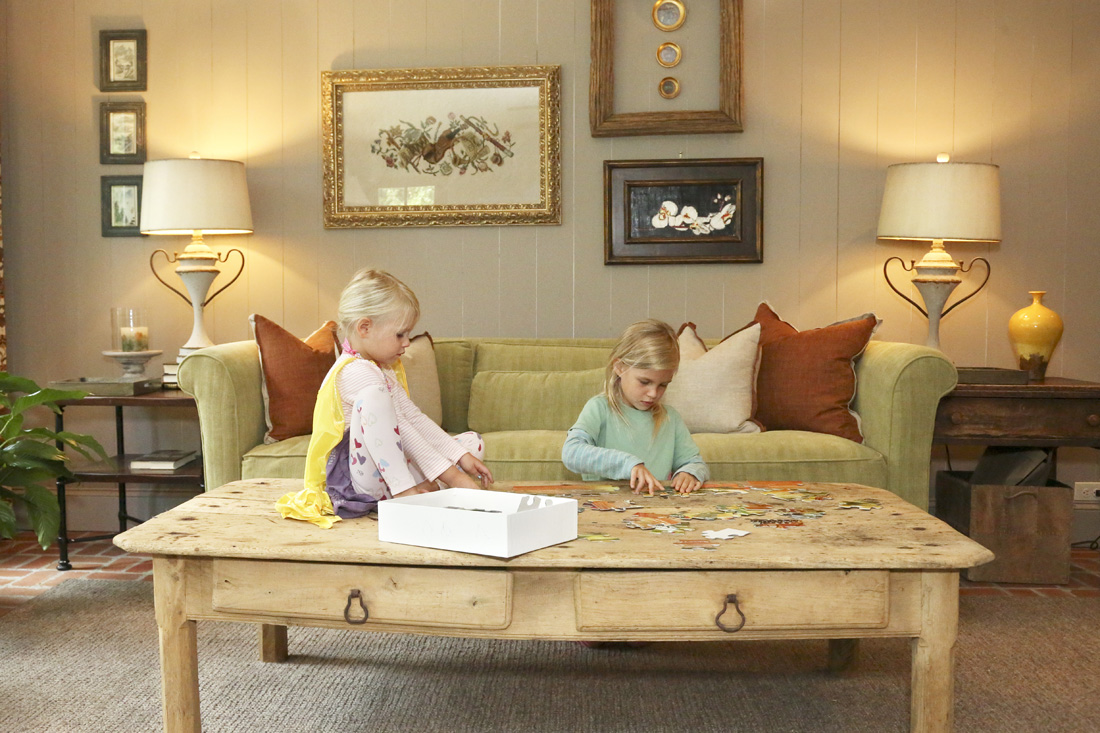Get a blower door test.
A blower door test is done by a professional energy auditor to determine your home’s air tightness. Dinkle puts it at the top of his clients’ green home to-do list to see where heat and energy are escaping. “This is something that can be done very well and easily, and the company gives you a list of 10 to 20 things you can do to improve your home’s tightness, including reducing air leakage and improving ventilation. It could be as simple as updating the weather stripping on your door.” Here’s how it works: A big fan is mounted into the frame of an exterior door; the fan pulls air out of the house to decrease the pressure inside; the higher outside air pressure then flows in through any unsealed cracks, and the auditors use a smoke pen to detect air leaks.
Choose more efficient windows.
Windows are not cheap, and in all likelihood, you’re not going to update them unless they are very old, or you’re doing a remodel and planning to stay in your home for many years to come. Dinkle highly recommends going for the most efficient you can afford. The gold standard in eco-friendly windows is the triplepane, also known as highly insulating windows. A study conducted by the U.S. Department of Energy’s Pacific Northwest National Laboratory (PNNL) found that these windows slash energy use in the home by 12.2 percent, compared with the aluminum-frame, double-panes that are common in homes across the country. But because of the expense of the highly insulating windows, it would take anywhere from 23 to 55 years for the reduced energy cost to make up for the increased expense, says PNNL. “They are expensive: around $85 to $100 per square foot. But when it was 9 degrees outside, I didn’t feel any cold when I put my hand on the windows. They are also quiet, and no one can break into them,” Dinkle says of his own home’s triple-pane windows imported from Europe where most are made. Another benefit is that there is less chance of condensation and mold formation in the home over time.
Replace light bulbs with LEDs.
Perhaps a simpler and more cost efficient fix in your house is lighting. When light bulbs burn out, switch to light emitting diode (LED) bulbs that last for an average of 50,000 hours, versus 1,200 hours (incandescents) and 8,000 hours (compact fluorescents). “LEDs are getting cheaper and cheaper, and they’re simply better,” Dinkle remarks. More props to LEDs: they use less power (watts) per unit of light generated (lumens) and don’t contain toxic mercury, which is obviously hazardous to the environment and to your health if one breaks.
Don’t buy furniture from China.
Whenever you’re bringing something into your home, be aware of where it’s made and what it’s made of. “You’re spending half of your life, 10 to 12 hours a day, in your house. Why buy cheap, toxic items made in China that are hurting your indoor air quality and the environment by off-gassing things like VOCs?” Dinkle asks. VOC stands for volatile organic compounds, which are found in paint finishes and glues, and aren’t healthy at certain levels. Unfortunately, a “Made in the USA” label doesn’t necessarily mean it is environmentally friendly, either. To rest assured that it’s a safe product, Dinkle recommends looking for a Greenguard Certification when buying furniture. Atlanta-based Greenguard helps manufacturers create and buyers identify interior products and materials—everything from furniture to paints and clocks to carpet—that have low chemical emissions. He also explains that European companies have higher standards on what is and is not allowed, so buying European furniture is typically a safer choice. “Traditionally, furniture from Europe has been vetted and is not going to have VOC issues, unlike China or other countries that have less regulation and lower safety standards. Some furniture companies are actively working on removing VOCs. Ikea recently did.” Buying antiques or something that’s slightly used is another eco-positive option. “If we’re upcycling and reusing items, we’re not making more stuff in China that we don’t need,” Hankey says. And investing in quality pieces that you are likely to hold onto for a long time, if not a lifetime, is perhaps the greenest choice of all.
Simply Buckhead is an upscale lifestyle magazine focused on the best and brightest individuals, businesses and events in Buckhead, Brookhaven, Sandy Springs, Dunwoody and Chamblee. With a commitment to journalistic excellence, the magazine serves as the authority on who to know, what to do and where to go in the community, and its surroundings.












